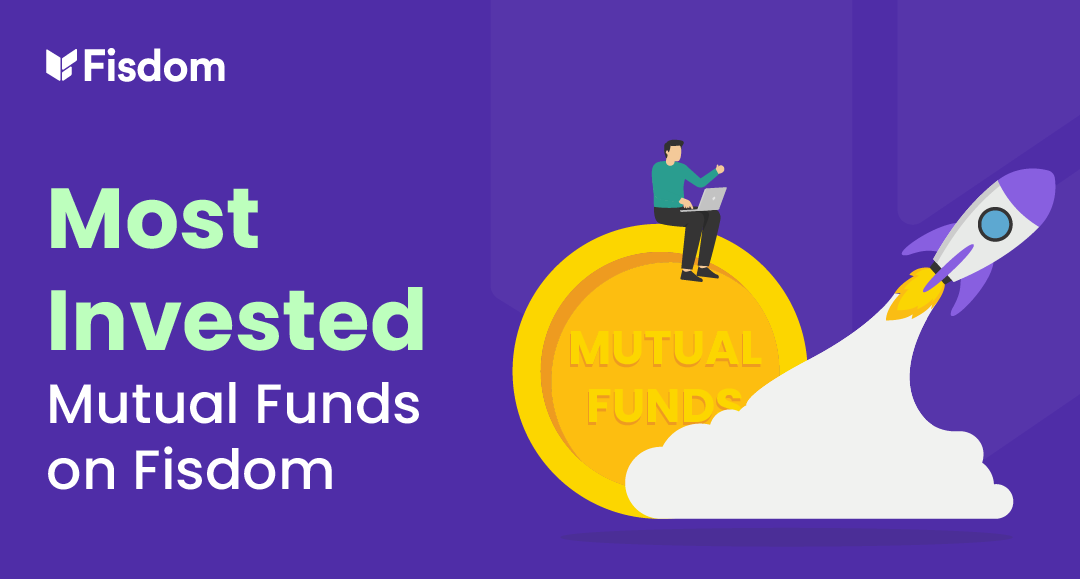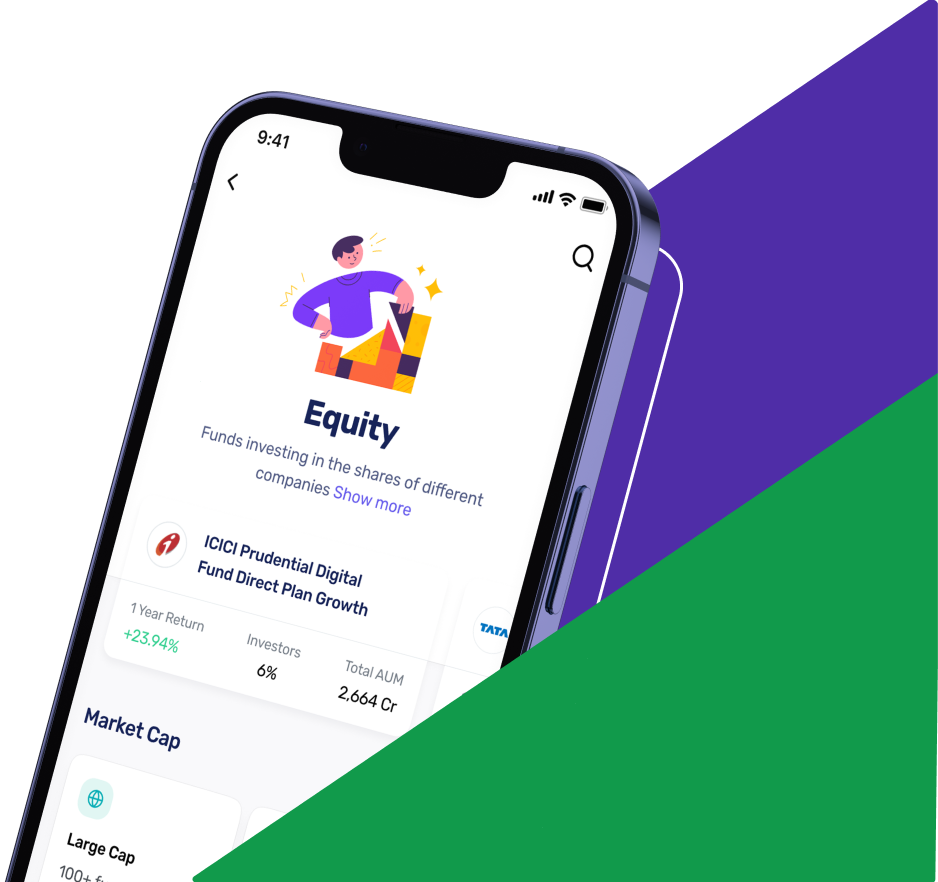
Passive investing is slowly gaining traction in the Indian investment market. It involves a buy-and-hold strategy. Passive investments are often low-cost as compared to active ones since these require minimal management fees or frequent changes in the portfolio. Long-term investors can aim for wealth creation through passive investments, especially if they are looking for portfolio diversification.
Here, we will discuss common types of passive funds and provide recommendations of some of the best passive funds to invest in 2021.
What are Passive Funds?
Passive funds consistently track a market index for gaining maximum returns from the fund. The portfolio of a passive fund replicates a market index like Nifty, Sensex, etc. The securities and the proportion of investment in each is the same as the index that the fund tracks.
In passive funds, there is no need for the fund manager to actively pick stocks for investment. This makes passive funds far easier to invest in and track than active funds. Investors invest in passive funds to fetch returns that are in line with the market performance. These funds are normally low cost since they don’t involve costs related to selection of stocks, researching, or frequent buying and selling of securities.
Types of Passive Funds
Here are some of the commonly available passive funds:
- Index Funds
Index Funds are passive funds that construct the investment portfolio using a market index as reference. Index funds are called passively managed funds, since they passively track the performance of an index. An index fund’s performance therefore depends on the performance of the chosen index. They invest in shares in a similar proportion as a particular index.
Unlike actively managed funds, index funds do not aim to outperform the market. The aim of index funds is to replicate the performance of an index.
- ETFs
ETFs or Exchange-Traded Funds are listed and traded on stock exchanges, just like shares. These funds pool money from investors and invest in diversified securities including equities, bonds, commodities, etc while tracking an underlying index.
An ETF tracks an index like the Sensex or Nifty by investing in securities in the same weights as the index. ETFs are tradeable in the market. An investor needs to have a demat account for investing in an ETF and executing any buy or sell transactions.
- Fund of Funds
Fund of funds invest in other mutual funds. Here, the fund manager is responsible for a portfolio of mutual funds that is designed to match the investor profile. Fund managers may choose to invest in the fund of the same fund house or different fund houses. Investment in a fund of funds helps in portfolio diversification as different mutual funds may comprise different assets, sectors, markets, or industries.
- Smart Beta
Smart beta funds are similar to the ETF model of investment. These funds combine the benefits of passively managed funds with active investment selection based on certain criteria. This allows the funds to generate higher returns while working on a low-cost model
Smart Beta funds are inclined towards both actively managed funds and passively managed funds. These track an underlying index for performance and also alter the portfolio as per market movements. Like ETFs, these funds are also free from the fund manager bias.
Best Passive Funds in India
1.Nifty Index Funds
Mentioned below are some top Nifty index funds in India:
- L&T Nifty 50 Index Fund – Growth – Direct Plan
About the fund
L&T Nifty 50 Index Fund belongs to L&T Mutual Fund umbrella. This scheme was launched on 15-Apr-2020. It adopts a passive investment strategy and invests in stocks that comprise the Nifty 50 index.
| Inception Date | April 15, 2020 |
| Benchmark Name | Nifty 50 |
| Fund Manager | Praveen Ayathan |
| Expense Ratio | 0.25% |
Historical Returns of the Fund (annualised)
| Since Inception |
| 57.82% |
- UTI Nifty Index Fund – Growth
About the fund
This fund is ideal for those investors who are looking for capital growth in line with the index returns. The fund follows passive investment strategy through investment in equity instruments that are part of Nifty 50 Index. It aims to replicate the underlying index of Nifty 50 to minimize the return differential between the fund and index.
| Inception Date | March 06, 2000 |
| Benchmark Name | Nifty 50 |
| Fund Manager | Sharwan Kumar Goyal |
| Expense Ratio | 0.19% |
Historical Returns of the Fund (annualised)
| 1-Year | 2-Year | 3-Year | 5-Year | 10-Year |
| 45.28% | 17.86 | 14.87% | 15.97 | 11.24% |
- ICICI Prudential Nifty Index Fund – Growth
About Fund
ICICI Prudential Nifty Index Fund – Growth is a passively managed mutual fund that was launched in January 2013. This is rated as a high-risk investment that requires a minimum SIP investment of Rs. 1000 and lump-sum investment of Rs.100. This fund has a large exposure to the banking, software, and petroleum industries. The investments are highly concentrated in large-cap stocks that form part of the Nifty 50.
| Inception Date | January 01, 2013 |
| Benchmark Name | Nifty 50 |
| Fund Manager | Mr Kayzad Eghlim |
| Expense Ratio | 0.10% |
Historical Returns of the Fund (annualised)
| 1-Year | 2-Year | 3-Year | 5-Year | 10-Year |
| 56.95% | 15.87% | 13.46% | 15.30% | 11.19% |
- HDFC Index Fund-NIFTY 50 Plan
About the fund
This is an open-ended scheme that replicates NIFTY 50 Index. The Scheme is passively managed with investments in stocks in a similar proportion and weightages as in the NIFTY 50 Index. The investment strategy focuses on reducing the tracking error through regular portfolio rebalance.
| Inception Date | January 1, 2013 |
| Benchmark Name | Nifty 50 |
| Fund Manager | Arun Agarwal |
| Expense Ratio | 0.20% |
Historical Returns of the Fund (annualised)
| 1-Year | 3-Year | 5-Year | Since Inception |
| 45.75% | 14.38% | 16.16% | 13.12% |
- SBI Nifty Index Fund
About the fund
This scheme invests in stocks comprising the Nifty 50 index as per the weightage in the index. The primary aim of the scheme is to achieve returns similar to the Total Returns Index of Nifty 50 index. It also aims to minimize the performance difference between the benchmark index and the scheme.
| Inception Date | January 17, 2002 |
| Benchmark Name | Nifty 50 |
| Fund Manager | Raviprakash Sharma |
| Expense Ratio | 0.09% |
Historical Returns of the Fund (annualised)
| 1-Year | 2-Year | 3-Year | 5-Year | 10-Year |
| 44.14% | 17.01% | 14.15% | 15.30% | 10.66% |
2.Sensex Index Funds
Mentioned below are some top Sensex index funds in India:
- HDFC Index Fund – Direct Growth – Sensex Plan
About the fund
HDFC Index fund – Sensex plan is an open-ended scheme that replicates S&P BSE SENSEX Index. The Scheme is passively managed with stock investments in a proportion that is similar to their weightages in the S&P BSE SENSEX Index.
| Inception Date | January 01, 2013 |
| Benchmark Name | S&P BSE SENSEX |
| Fund Manager | Mr. Arun AgarwalMr. Krishan Kumar Daga |
| Expense Ratio | 0.20% |
Historical Returns of the Fund (annualised)
| 1-Year | 2-Year | 3-Year | 5-Year | Since Inception |
| 56.06% | 17.20% | 15.32% | 16.59% | 13.47% |
- ICICI Prudential Sensex Index Fund – Direct Growth
About Fund
ICICI Prudential Sensex Index Fund – Growth is an open-ended fund that tracks and emulates the performance of the S&P BSE Sensex index. This is done through investment in the same stocks that are part of the Sensex index.
| Inception Date | September 21, 2017 |
| Benchmark Name | S&P BSE SENSEX |
| Fund Manager | Mr Kayzad Eghlim |
| Expense Ratio | 0.10% |
Historical Returns of the Fund (annualised)
| 1-Year | 2-Year | 3-Year | 5-Year | Since Inception |
| 57.53% | 16.32% | 13.92% | 15.75% | 12.99% |
- Tata Index Fund – SENSEX – Direct Plan
About the fund
This is an open-ended equity scheme tracking S&P BSE Sensex. Tata Index Fund is a passively managed fund that aims to provide returns which closely correspond to the returns of the Sensex. This fund option is rated as very high risk and it requires a minimum SIP investment of Rs. 500. Investors have to make a minimum lump-sum investment of Rs. 5,000.
| Inception Date | January 1, 2013 |
| Benchmark Name | S&P BSE SENSEX TRI |
| Fund Manager | Sonam Udasi |
| Expense Ratio | 0.80% |
Historical Returns of the Fund (annualised)
| 1-Year | 2-Year | 3-Year | 5-Year | 10-Year |
| 55.40% | 17.29% | 15.48% | 16.51% | 12.97% |
- LIC MF Index Fund – Sensex Plan – Direct Plan
About the fund
LIC Sensex Index Fund invests 98.93% of its funds in Indian stocks. Out of this, 87.79% is concentrated in large-cap stocks. It is ideal for investors who are looking for long-term capital growth. Investment is concentrated in equity instruments of S&P BSE Sensex Index stocks and is subject to tracking error.
| Inception Date | January 01, 2013 |
| Benchmark Name | S&P BSE Sensex TRI |
| Fund Manager | Yogesh PatilRitu Modi |
| Expense Ratio | 0.57% |
Historical Returns of the Fund (annualised)
| 1-Year | 2-Year | 3-Year | 5-Year | Since Inception |
| 55.56% | 17.04% | 15.02% | 15.93% | 12.63% |
3.Equity ETF
These ETFs invest in shares of companies that are equity focused. Equity ETFs also invest in other forms of equity of select organisations. Some of the recommended Equity ETFs are:
| Fund Name | Index Tracked | 1- Year Returns | 3-Year Returns | 5-Year Returns |
| Nippon India ETF Nifty BeES | Nifty 50 | 69.04% | 13.98% | 15.16% |
| Nippon India ETF Bank BeES | Nifty Bank | 99.04% | 9.03% | 15.28% |
| Motilal Oswal Midcap 100 | Nifty Midcap 100 | 98.96% | 11.34% | 14.53% |
| Motilal Oswal Nasdaq 100 | Stocks listed in the Nasdaq (US tech companies) | 37.65% | 26.94% | 26.68% |
4.Gold ETF
These are commodity exchange-traded funds that primarily focus on building a portfolio of physical gold assets. The investment strategy involves purchasing shares of companies that enable the fund to own gold on paper, without the risk of asset protection. Some of the top-rated Gold ETFs are:
| ETF Name | 1 Year Returns | 3 Year Returns | 5-Year Returns |
| HDFC Gold Exchange Traded Fund | 1.58% | 14.37% | 9.49% |
| UTI Gold Exchange Traded Fund | 1.06% | 14.38% | 9.39% |
| Nippon India ETF Gold BeES | 1.33% | 14.43% | 9.32% |
5.Debt ETF
Debt ETFs are also known as Bond ETFs. These ETFs trade or invest in fixed return securities like debentures, government bonds, etc. Here is an example of a Debt ETF in India:
| ETF Name | 1-Year Returns | 3 Year Returns | 5 Year Returns |
| Nippon India ETF Liquid BeES | 2.15% | 1.15% | 1.02% |
6.Currency ETF
Currency ETF funds aim to generate profits through exchange rate fluctuations. They invest in different currencies based on predictions about the currency’s future performance. Currency ETFs closely follow stock exchange trends along with political and economic scenarios of various countries. Here are two commonly traded Currency ETFs in India:
- Wisdom Tree Indian Rupee Strategy Fund
- Market Vectors- Indian Rupee/USD ETN
7.Fund of Funds
Some of the top performing fund of fund investment options in India are:
- Aditya Birla Sun Life Financial Planning FOF Conservative Plan
About the fund
The Scheme aims to generate returns from investments in mutual fund schemes chosen as per the BSLAMC process and keeping in mind the risk-return profile of investors.
| Inception Date | January 1, 2013 |
| Benchmark Name | CRISIL Short Term Debt Hybrid 75+25 Total Return Index |
| Fund Manager | Vinod Bhat |
| Expense Ratio | 0.38% |
Historical Returns of the Fund (SIP annualised)
| 1-Year | 2-Year | 3-Year | 5-Year | 10-Year |
| 22.41% | 11.21% | 8.95% | 8.64% | 8.54% |
- ICICI Prudential Thematic Advantage Fund (FOF)
About the fund
The scheme aims to generate capital appreciation from a portfolio of Sectoral/ Thematic schemes that are accessed through diversified investment styles of underlying schemes.
| Inception Date | January 1, 2013 |
| Benchmark Name | NIFTY 200 Total Return Index |
| Fund Manager | Manish BanthiaSankaran NarenDharmesh Kakkad |
| Expense Ratio | 0.94% |
Historical Returns of the Fund (SIP annualised)
| 1-Year | 2-Year | 3-Year | 5-Year | 10-Year |
| 83.34% | 24.96% | 16.80% | 15.80% | 12.64% |
- Quantum Multi Asset Fund of Funds
About the fund
The fund aims to generate capital appreciation while minimising risk (through diversification of risks across asset classes) with a combined portfolio of equity, debt / money markets and Gold schemes of Quantum Mutual Fund.
| Inception Date | July 11, 2012 |
| Benchmark Name | CRISIL Composite Bond Total Return Index |
| Fund Manager | Chirag MehtaNilesh Shetty |
| Expense Ratio | 0.10% |
Historical Returns of the Fund (SIP annualised)
| 1-Year | 2-Year | 3-Year | 5-Year | 10-Year |
| 22.54% | 10.92% | 9.50% | 9.49% | 9.69% |
8.Smart Beta Funds
Some of the top performing smart beta fund options in India are:
| Fund name | Launch Date | 1-Year Return | 3-Year Return | 5-Year Return | Exp Ratio | Assets (Rs. Cr) |
| Edelweiss ETF – Nifty 100 Quality 30 | May 2016 | 57.76% | 12.08% | 12.13% | 0.27% | 10 |
| DSP Equal Nifty 50 Fund – Regular Plan | Oct 2017 | 78.94% | 11.78% | — | 0.81% | 150 |
| Principal Nifty 100 Equal Weight Fund | July 1999 | 72.64% | 10.22% | 11.68% | 0.96% | 24 |
FAQs
- What is a passive fund?
A passive fund tracks a market index to fetch returns that are in line with the index. Here, the fund manager does not actively manage investments. Since the role of the manager is limited, passive funds generally have lower expense ratios.
- Are passive funds better than active?
Since active investing is usually more expensive than passive funds, investors are exploring passive funds to gain from lower expense ratios. Also, in case of active funds, managers may fail to gain good returns. Passive investing, on the other hand, may gain returns that are parallel to the index since these track the index selected.
- How do passive funds work?
Passive or ‘tracker’ funds aim to deliver returns that are in line with the market. They don’t aim to outperform the market or index. The fund manager’s role in passive funds is also limited to tracking the index and he/she does not have to actively select securities for investment, since the fund composition is replicated to the index composition.
- Which is an example of passive investing?
Passive investments generally come in the form of ETFs, Index funds, Smart Beta funds, Fund of funds, etc. These hold portfolios of stocks, bonds, commodities, etc.as per the composition of the index that they track.
- How do I begin investing in passive funds like index funds?
You can start exploring passive funds like index funds and Fund of Funds through the Fisdom app. This app can be downloaded on your smartphone and after following certain easy registration steps, you can begin investing in these funds.



























